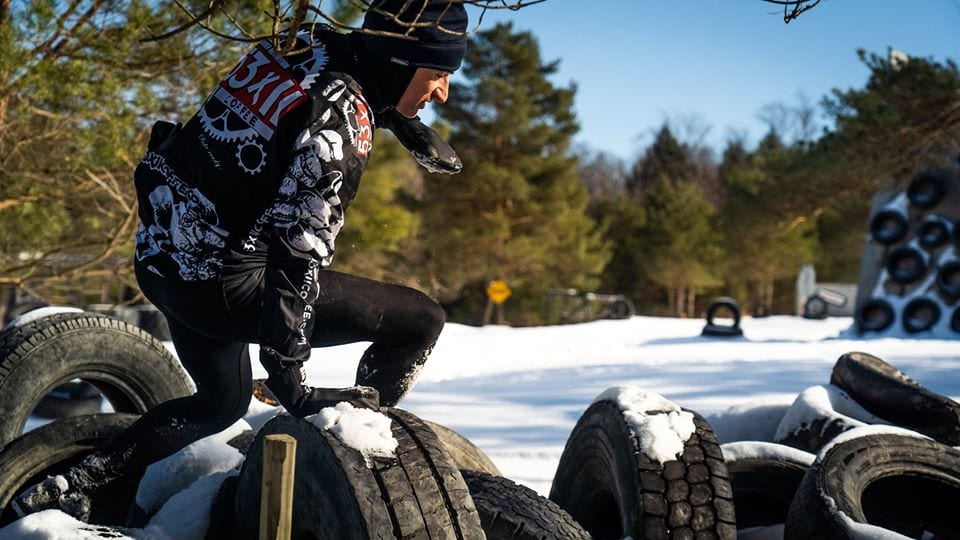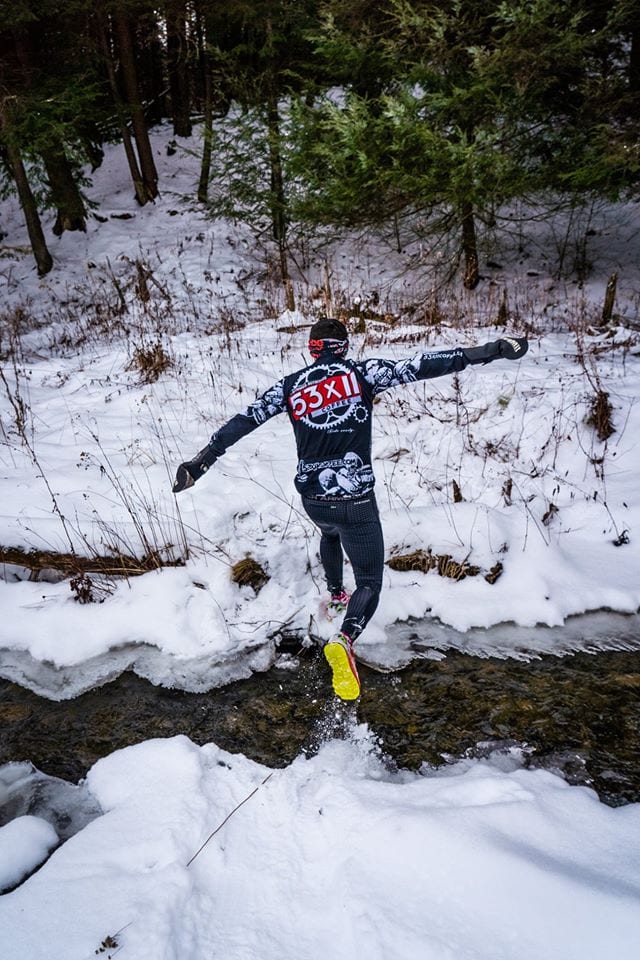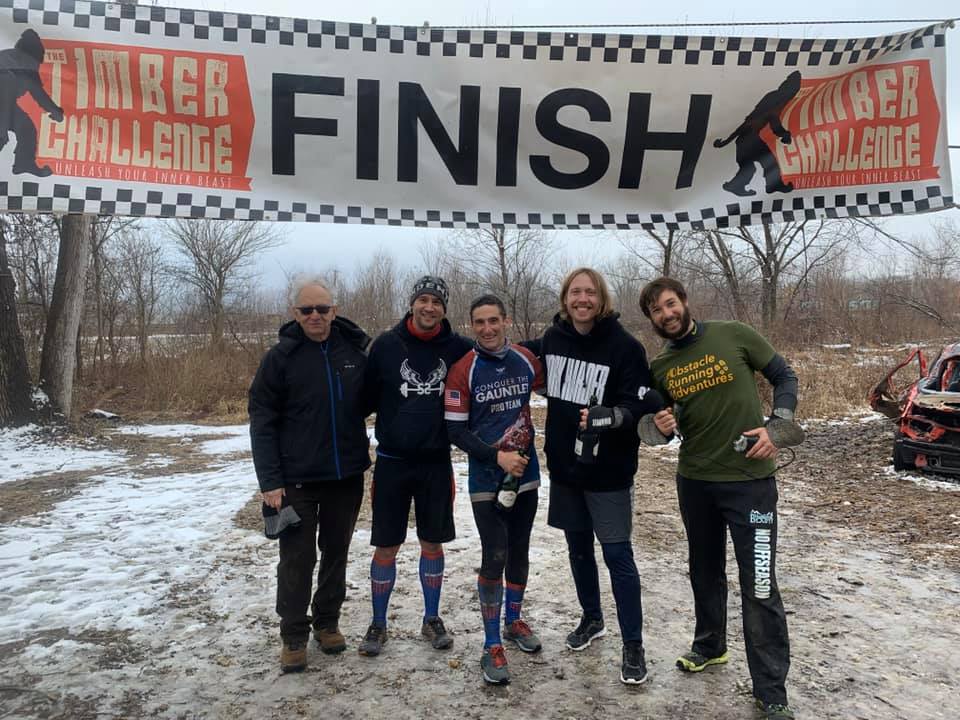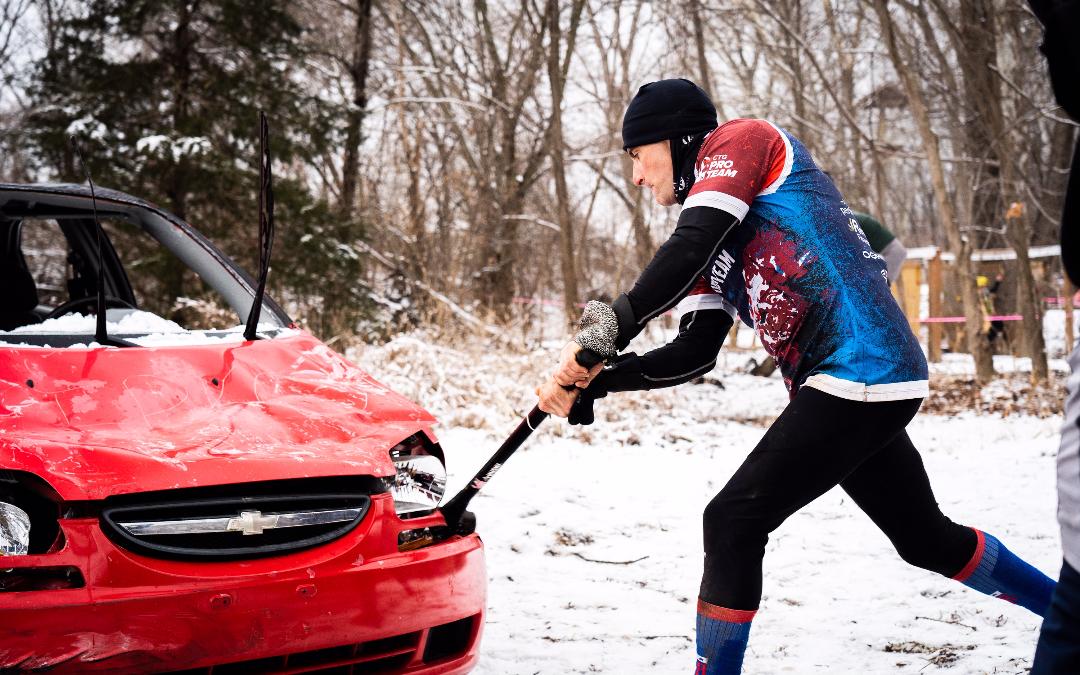8 Day of Winter OCR America 2 Lessons Learned
Author: Evan Perperis
Go to Source
Most races companies don’t hold races in the winter and for a good reason. The weather is miserable, the conditions are brutal and a snowstorm could cancel the event or prevent more than half of your attendees from making it to the start line. Still, I decided to hold my annual Ultra-OCR charity event in January over eight days at eight venues spanning from NY to Kansas. Here are some lessons learned over the eight days:
1. Having the right gear helps but it doesn’t make up for a weak mind:
In my recent article on Mud Run Guide OCR America 2: The Gear, I talked through all the different equipment I brought for the event. Multiple sets of MudGear socks, compression pants, wool hats, buffs, BleggMits and more. I managed to fill two HYLETE bags full of gear plus another duffel bag. All of that is great, but at the end of the day, nothing will make you get out of bed and keep putting one foot in front of the other like a strong mind. You can’t buy the type of mental endurance needed to complete events like this or other Ultra-OCRs like World’s Toughest Mudder or Spartan Ultra-Beasts. (If you want to know more about my mindset pick up a copy of my biography Ultra-OCR Man: From Special Forces Soldier to Record-Setting OCR Athlete now available in hard copy, digital and audio-book.)
OCR America Day 3- Newbsanity Extreme Ravine
Things got real in Glen Aubrey, NY when Evan Perperis tackled 8 laps of Newbsanity’s Extreme Ravine course. The cakewalk is over.Evan’s affiliates:MudGearHammer NutritiondryrobeGoodrRockTapeAtomik Climbing Holds
Posted by Stoke Shed on Tuesday, January 21, 2020
2. If you are cold, move faster:
Day 3 at Newbsanity’s Extreme Ravine was my worst day (see the above video). With temperatures that started in the single digits and a technical course with lots of elevation, I spent almost 12 hours on course. Stopping at the end of each lap even for 1-2 minutes to refuel made me cold (even with my dad heating up my bottles of Hammer Nutrition’s Perpetuem and Heed). The only way I stayed warm was moving faster and moving continually. A lesson I preach for World’s Toughest Mudder and something I had to apply again on Day 6 when it was in the 30s and raining outside. Even when I fell thigh-deep in water on Day 5 (see video below), less than ¼ mile into the day’s mileage and the temperature was 30 degrees out I was still able to keep going. I just moved faster until my body heated up. Over the eight days, I never did large outfit changes where I changed into dry clothes or even changed socks mid-day, I just kept a solid pace to heat my body.
OCR America Day 5- Erie Obstacle Battlegrounds
Evan finds out that sometimes a little ice is just as bad as the obstacles on the course. He’s good at thinking on his feet when he can keep them beneath him.Special thanks to MudGear, dryrobe, and RockTape for the wardrobe assists, and to Amy Pajcic for insane amount of pacing miles!
Posted by Stoke Shed on Thursday, January 23, 2020
3. Always have a contingency:
Not every day of OCR America went as planned and neither will every race. Always have tiered goals (something I’ve talked about for Toughest Mudder). It allows you to keep pushing to your limits when you start falling behind. My initial plan was a marathon a day, towards the end of the week I adjusted it to 200 miles (25 miles a day) since I knew I wouldn’t be able to accumulate mileage on the last day due to it being a live event (KC Timber Challenge’s Yeti). You should not only include contingency goals in your races, but also in your gear. I never had to use all my cold-weather gear but when things got bad I had my Neptune shirt, my ORORO electrically heated jacket that my pit crew was wearing and when all else fails wrapping myself in a space blanket.
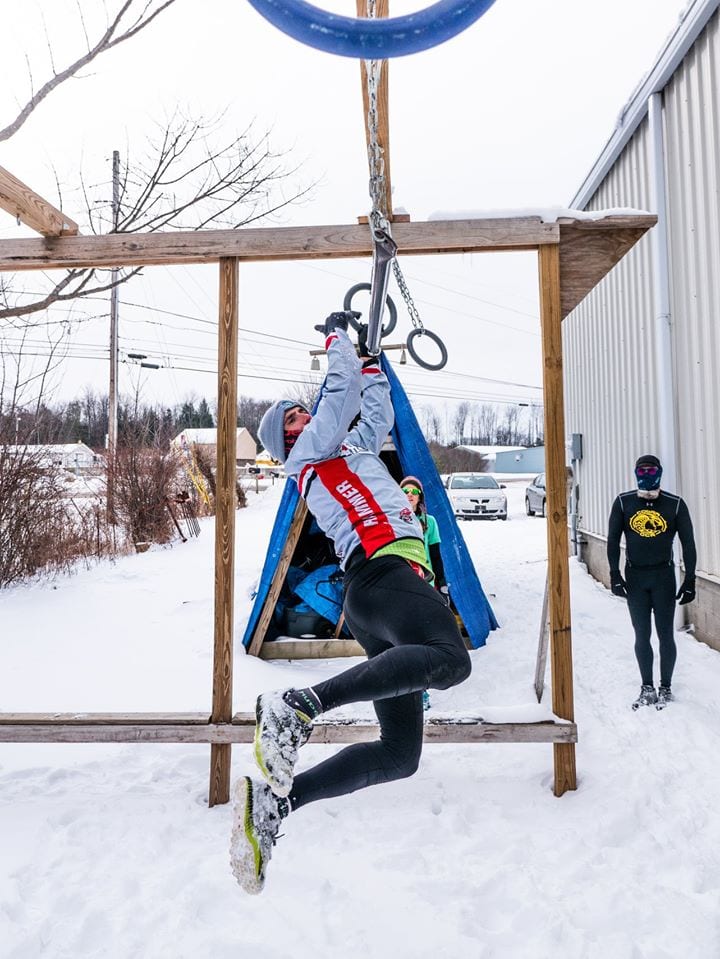
Day 5’s Erie’s OCR Battlegrounds rig with pacers CTG Pro Amy “Magic” Pajcic and CObRA’s Tim Connor in the background.
4. Recovery is key:
With 8 days of Ultra-OCR, recovery nighty becomes key. Every night I put on Rapid Reboot recovery pants and used Compex Fixx 1.0 massager for focused problem areas. Post-race nutrition consisted of Hammer Nutrition Recoverite and Yolked followed by a healthy meal within the hour for both my crew and I. However, with an event this long its about maximizing recovery while your body continues to degrade. While you may not be doing something as extreme, if you are working hard all week, stressing your body and barely sleeping, your daily life may feel like a mini-OCR America. Take time to recover, eat healthily, and sleep if you want to perform at your best whether you are racing a Conquer The Gauntlet, a Savage Race or a Spartan Beast.
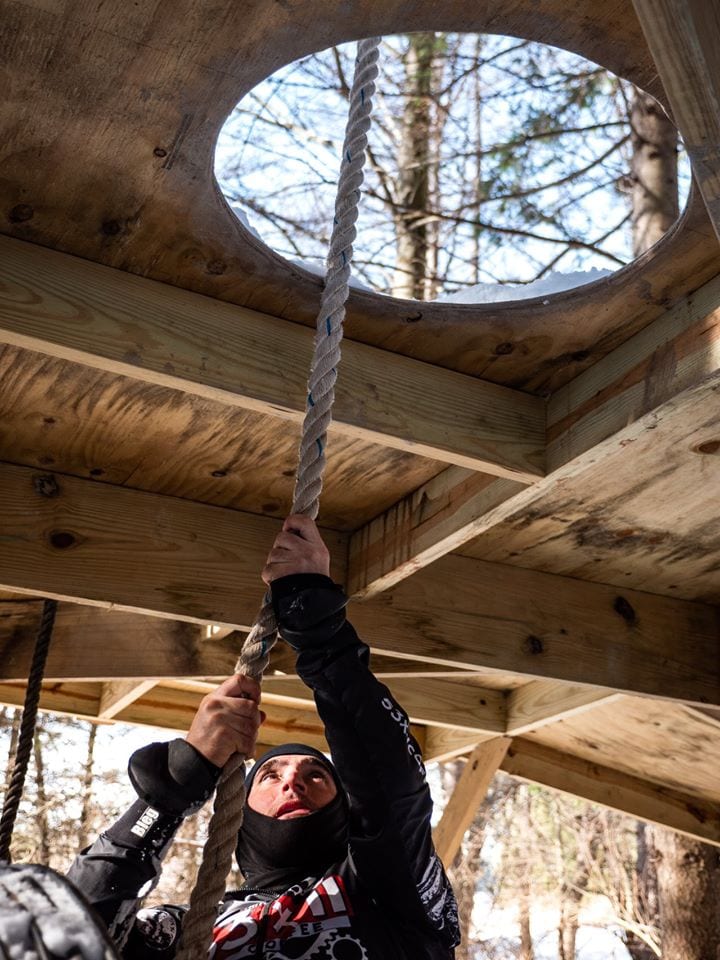
Day 4’s Newbsanity Mud Gauntlet, the Area 51 obstacle (combination uphill tunnel crawl, rope climb and balance beam)
5. The human body is smarter than you:
Over the 8 days you would expect my hands to be ripped to shreds and my feet to be covered in blisters, but I had neither. No ripped calluses on my hands, no blisters on my feet. The question I always get is how? For my hands, I wore gloves a lot consisting of a mix of RockTape Talons (for dry courses), MudGear’s MadGrip (for outdoor courses where my hands could stay dry) and BleggMits (for outdoor wet courses). However, the real answer is I’ve conditioned my hands over the last five years. Lots of training, lots of racing and I never shave calluses or do anything else to my hands. As my hands hurt and feel like they might rip I adjust where I grab obstacles (sometimes on the fingertips, sometimes deep in the palm sometimes in the normal grip). I never pop blisters or shave calluses on my feet either. I find shoes that fit well and toughen my feet through training. Eventually, your body figures out where it needs to be tough and hardens those areas. 8 days, 200 miles, 1000+ obstacles, zero blisters.
6. Find something more important than yourself:
Sometimes it feels like people do things primarily for “likes” on social media. If you think that’s me, you obviously don’t know me very well. There’s no amount of “likes” or “attention” that can get you to train for ultras year after year. If you want to really find some limits, find something more important than yourself and use that as motivation. Having a bigger goal, like raising money for Folds of Honor (scholarship money for children whose parents were killed or wounded in military service…donation link still open) makes you push harder than you might normally be capable. Hearing stories like Gold Star wife Colleen Katzenberger (listen to her story here in Episode 120) brings you back to reality and a reminder that there are more important things in this world than the latest rule change or race location. Between the fundraising goal and my entire support crew (my dad Terry Perperis, driver/pacer Jacob Stone, Obstacle Running Adventures podcaster/pacer Mike Stefano and filmmaker/pacer Bobby Ross) expecting me to perform, quitting was simply never an option. The only options were speed up, slow down, or move at the same pace.
The event is over, but the fundraiser isn’t. Please consider donating to Folds of Honor here via our Facebook fundraiser. If you want more Ultra-OCR tips, pick up a copy of the only book focused on endurance OCR, Mud Run Guide’s Ultra-OCR Bible (now available in hard copy and digital).
If you missed the event or want to see all the gear in action, check out my recap of the full eight days, including video footage by Stoke Shed.
Videos and pictures provided by Stoke Shed
The post 8 Day of Winter OCR America 2 Lessons Learned appeared first on Mud Run, OCR, Obstacle Course Race & Ninja Warrior Guide.

